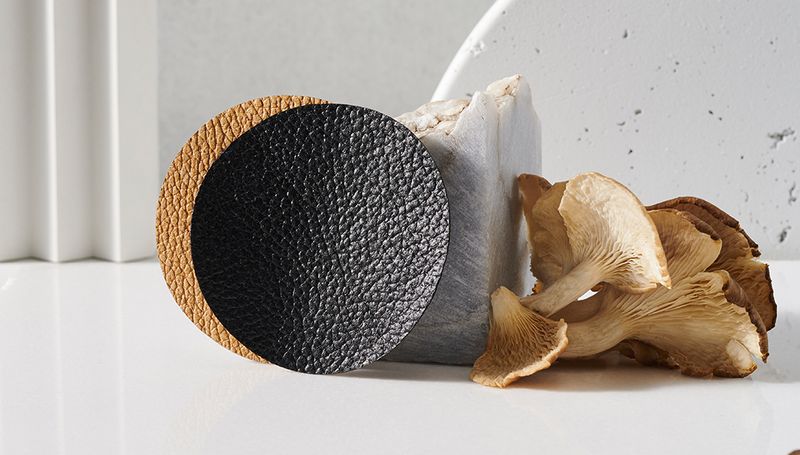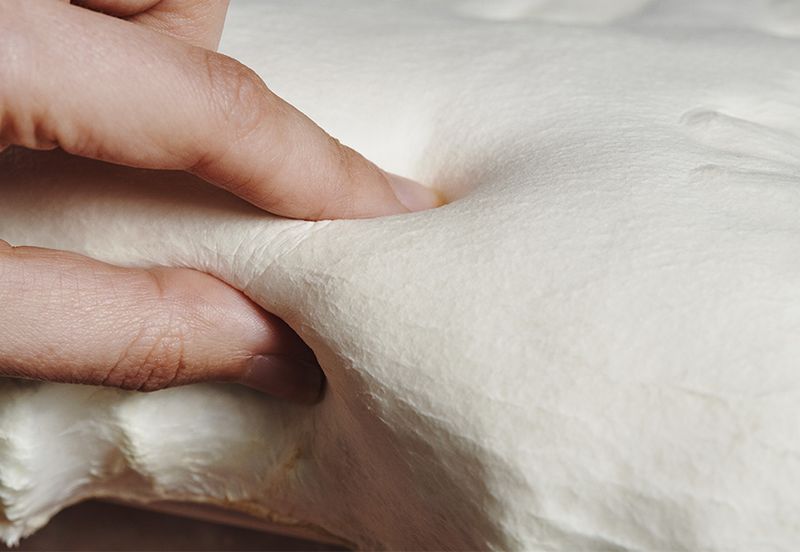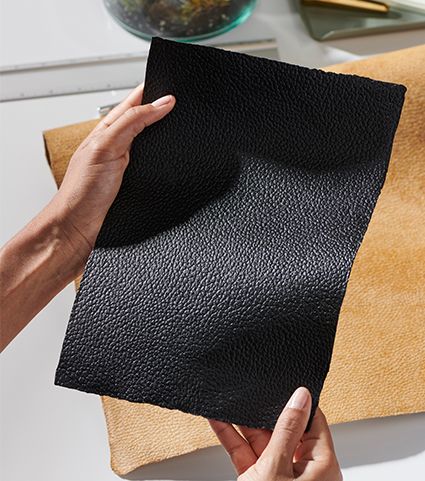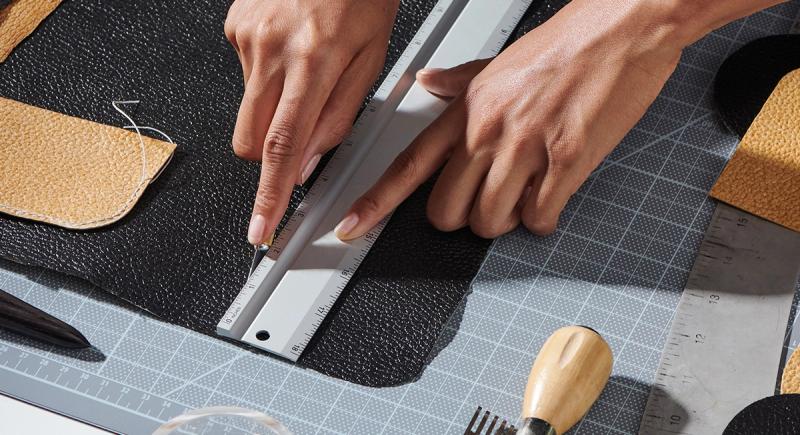Mycelium Leather: The Ultimate Guide


The demand for eco-friendly fashion is becoming more and more prevalent as consumers start to understand the impact of the fashion industry. Mylo™ material seeks to fill this role of sustainability in the fashion world by creating leather that is not only renewable but beautiful as well.
What Is Mycelium?
Mycelium can easily be confused with mushrooms, but they’re two different things. Mushrooms and mycelia are both a part of the Fungi kingdom, but mycelium is the web-like, underground network from which mushrooms grow. Not all mycelia fruit mushrooms, but all mushrooms come from mycelia.
Mycelia are a large, intertwined network of web-like structures called hyphae that secrete enzymes to break down their food sources, including plant material and other biowastes in forest floors and fallen trees. These hyphae can be nearly imperceptible to the human eye or much larger — some mycelia span over thousands of acres.
Mycelium spores are released from mushrooms and travel through water or air — some spores “surf” on wind gusts, while others are buoyant and float on streams and lake currents. Once these microscopic spores land in a location that is conducive to growth, they germinate and grow hyphae, breaking down compost or plant matter around them.
There are over 14,000 species of fungi in the world, with some that can grow in conditions where other life is unsustainable. These fascinating organisms are a critical part of ecosystems and agricultural processes.


How Do You Make a Leather Alternative Out of Mycelium?
To make Mylo™ material, a leather alternative out of mycelia, the team at Bolt Threads recreates the ideal growing conditions of mycelium’s natural environment in a controlled indoor setting.
The spores are fed with a mixture of sawdust and other organic material and then spread out to grow. Since temperature and humidity are the main determinants of whether a mycelium will fruit into mushrooms, the environmental conditions are kept under close watch.
Mycelium quickly grows into a foam-like sheet. As it grows, it spreads across the entire mat. When the mat is filled with mycelium, it’s ready to be harvested.
Once the mycelium is harvested, the leftover byproducts are then composted. The harvested mycelium is not the final product you would see in a store. To create Mylo™ material, the mycelium is then processed and dyed.Mylo™ material isn’t constrained by color, emboss, or texture.


What Is Mycelium Leather Like?
Mylo™ material is supple and soft, and can be processed into a thickness similar to animal leather.
To make Mylo™ material, we have partnered with world experts in tanning and dyeing who have been recognized with global sustainability certifications to help build a process designed for human health and safety and the lowest environmental impact. Mylo™ is free of substances of concern such as DMFa and chromium, one of the most noxious chemicals used in animal and synthetic leather.
Caring for Mylo™ items is similar to caring for products made with animal leather: wipe it down with a soft cloth and keep it stored in its dust bag or shoebox. Over time, Mylo™ material should develop a lovely patina with use.
Why Would You Want to Make a Leather Alternative Out of Mycelium?
The environmental impact of the fashion industry, coupled with the ever-growing world population and subsequent demand for products, is becoming a primary concern for environmentalists and fashion houses alike.
It’s too early to have an independent study on Mylo’s environmental impact, but creating a sustainable upgrade to leather that checks the boxes for people who love leather is the whole reason we’re doing this. The process of tanning animal hides for leather also impacts the environment, requiring a considerable amount of water consumption. Making Mylo doesn’t involve raising livestock or emitting any of the associated greenhouse gases or material wastes. As disposable incomes rise around the globe, so will the demand for meat and leather goods. This demand simply can’t be met using the land and other resources it takes to raise cattle. The mycelia we grow for Mylo is produced in days, without the resource intensity of raising livestock, which can take years. Our preliminary impact assessment indicates the incredible environmental benefits of mycelia-based leather. In 2021, we’ll undertake an independent impact assessment and share the quantitative results.
And unlike synthetic leather, which is usually made from a synthetic fabric and a polyurethane or PVC coating, Mylo™ material is made from mycelium and is not petroleum-based. Additionally, Mylo’s processing and finishing chemistries are intentionally evaluated and selected using Green Chemistry principles.


Where Can I Get Mylo™ Products?
Mylo products from consortium partners like adidas, Lululemon, Stella McCartney, and more are on the way. Breakthrough technology such as Mylo™ material is challenging and expensive. We are working with a global team of experts to engineer entirely new processes. After all, the process for making leather as good as it is today took thousands of years! In our current stage, we are dependent on large brands to help subsidize the massive costs it takes to figure out how to make Mylo at a commercial scale. These companies are enabling us to develop a process that will eventually produce a high quality leather alternative at a comparable price to leather hide. That’s going to take a few years, so for now we are grateful to have partners who will help us get there.
Meet the leather alternative that’s currently in the design studios of industry leaders.
Discover MyloHoning Mylo into a Quality Alternative
Our intention with Mylo™ material is to make a high quality alternative to animal leather and other synthetic leathers. Mycelium grows quickly and is infinitely renewable. As more and more fashion houses turn to leather alternatives solutions like Mylo™ material will come to the forefront.
Mylo™ consortium partners were intentionally selected for exceptional product quality, impactful global reach, and proven commitments to innovation and sustainability. These leaders are coming together to help create a more sustainable future for the fashion industry.